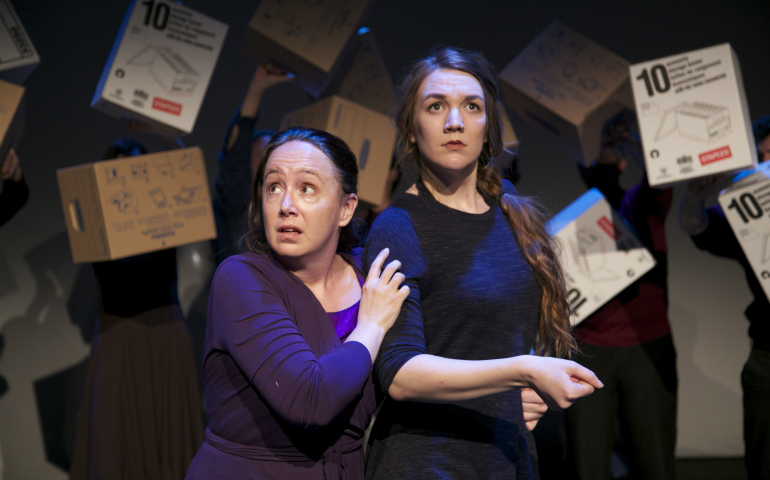
“Calderon’s Two Dreams,” drama from the golden age of Spanish theater, is being resurrected for the New York stage this month and it is showing strong parallels between two epoques: 17th-century Spain — when it was written — and present-day America.
The ill-fated title character was prophesied to be the worst tyrant that ever lived.
The production is two abridged versions of the same play, “Life is a Dream,” by famed Spanish dramaturge Pedro Calderon. The two renditions are to be presented back-to-back at New York’s East Village avant garde theater lab, La MaMa. Feb. 10-26.
The first — and more political — was written when Calderon was a popular court trendsetter with a mistress in tow; and the second, decades later as a priest. The latter version was nearly forgotten, while the former ranks in the “canon of great theater.”
“Large-scale, epic productions of mythic themes were the mainstay of Spanish entertainment at that point — comparable to ‘Game of Thrones,’” said Fr. George Drance, the Jesuit priest directing “Calderon’s Two Dreams.”
While “Game of Thrones” royal bloodletting and intrigue may satiate contemporary audiences, Baroque-era Spaniards were in the doldrums one generation after the defeat of the Spanish Armada turned to Calderon and the theater for entertainment.
In “Life is a Dream,” Drance said that the drama centers on two overriding questions: “Can the prince become a fitting ruler for the kingdom?” and “Can man be a fitting caretaker for God’s creation?”
Spoiler alert: The answer to both is a resounding no, save for massive divine intervention in the guise of fantastical elements like Wisdom and Love who take the stage as characters all their own.
“It is an allegory for man’s spiritual destiny and his incapacity to realize it without the divine intervention of the Eucharist,” Drance said of the second version, which was first performed on the Feast of Corpus Christi.
Not just spiritually, but politically as well, Spaniards were looking for a way to make their nation great again.
The empire was afflicted with major threats: Thieving buccaneers took advantage of gold- and silver-laden Spanish galleons en route to the homeland on trade routes from Mexico; previous attempts by the Turks to invade Europe; and a decades-long insurgency of the Protestant Dutch exacted immense capital investment in a military industrial complex that was bankrupting the national treasure. Not to mention, the Spanish Inquisition was in full swing, trying anyone suspected of not being Catholic enough.
In this surreal world of intense nationalism, with political fault lines exposing a society increasingly unhinged, the Jesuit-educated Calderon contemplated a conspicuously Ignatian theme: How does a person attune one’s free will to cooperate with God?
“But you still need to watch this play to really see the likeness of Calderon’s world to our own time,” Drance said.
And he hopes that all theater-goers — Catholics especially — will enjoy this theatrical production.
“It would be great to see the New York Catholic community become even more excited about these artistic opportunities available to them,” Drance said.
Tickets are available at La MaMa and at Magis Theatre.
[George Goss is a special project consultant for NCR. His email address is ggoss@ncronline.org.]




